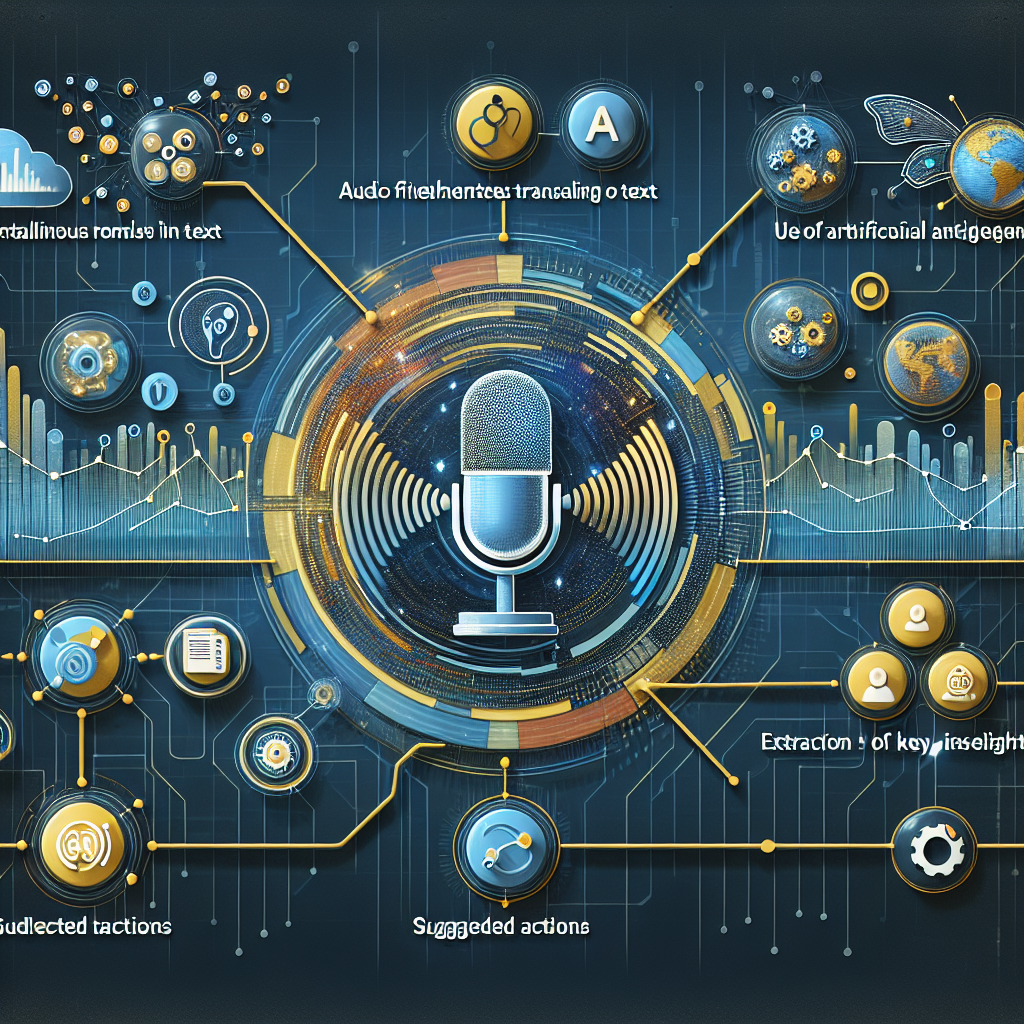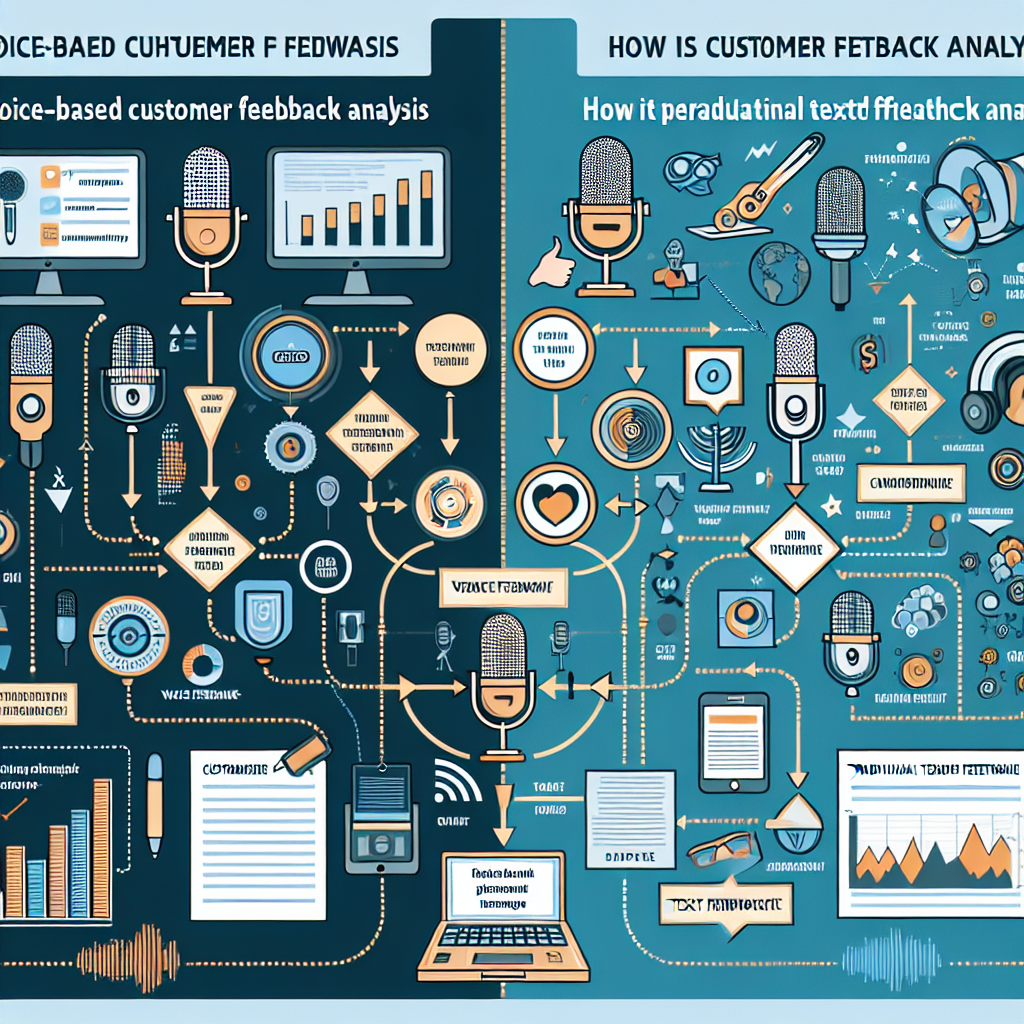
In the digital age, data has become an invaluable asset for businesses striving for customer satisfaction and growth. Voice-based customer feedback analysis is an innovative technique that is revolutionizing how businesses extract and interpret data for actionable insights. Unlike textual data, voice data comes with rich, nuanced information such as tone, sentiment, and intent, thus presenting a wealth of insights just waiting to be harnessed.

Implementing voice-based analysis is not just about collecting customer comments but goes beyond to capture the real emotions relayed in customer feedback. The tone, pitch, and volume of a customer's voice can reveal the underlying sentiment and intent in their feedback. In turn, businesses can utilize these insights to improve products, customer service, and overall experience. Technologies like Speech-to-Text and Google's Cloud Speech-to-Text are leading examples of this trend.
Voice-based customer feedback analysis utilizes natural language processing (NLP) and machine learning to translate, transcribe, and analyze voice feedback. Notably, sentiment analysis plays a critical role in interpreting the emotional tone carried in the customer’s voice, thus informing businesses about a customer's satisfaction levels with their product/service.
By converting voice data into structured, actionable data, businesses can discover meaningful insights that would otherwise be hard to extract from written feedback. By implementing voice-based analysis, businesses can also reduce their response time to customer feedback, accelerating decision-making and driving business growth.
The potential of voice-based analysis in transforming customer interactions is immense. As this technology continues to evolve and improve, it promises a future where businesses can engage and interact with their customers on an even deeper, more personalized level.
At the heart of voice-based customer feedback analysis are complex artificial intelligence (AI) and machine learning algorithms. These form the fundamental technological foundation that helps parse and interpret voice data, extracting actionable insights that drive business growth and customer satisfaction.
In this process, the first step typically involves voice recognition, during which raw voice data is converted into text. Many evolving technologies, notable amongst them being Google's Speech-to-Text, employ neural networks modelled on the human brain, which have shown exceptional performance in identifying spoken language accurately.
Once the voice feedback is transcribed, the next step is text analysis. Here, different Natural Language Processing (NLP) algorithms come into play. One such popular algorithm is IBM's Watson Natural Language Understanding, capable of understanding intricate nuances of human language, including emotions, sentiment, and key phrases that can indicate a customer's level of satisfaction or dissatisfaction.
The final step in the process involves translating this extracted information into actionable insights. This is where AI and machine learning prove especially valuable. By learning from vast datasets of customer feedback, they can provide businesses not just with an understanding of what the customer feels, but also why they feel this way, and recommend actions that can effectively resolve the concerns raised.
It's important to understand that while the basic principles remain the same, the specifics of voice data parsing and interpretation can vary greatly based on the underlying AI methodologies and the data's characteristics. Therefore, it's crucial considering these elements when choosing a voice analysis solution—that not only provides accurate data interpretation but also meets your organization's unique needs and challenges.
As businesses continue to evolve in order to meet consumer demands, methods of gathering customer feedback also need to adapt. In this context, Voice-Based Customer Feedback Analysis presents a promising approach, providing significant advantages over conventional text-based methods.

Voice feedback's strength lies in its ability to create more authentic responses. Customers voicing their thoughts and feelings allow for genuine, on-the-spot reactions that are often missed in text-based feedback. Many a time, a text-based medium can lead to guarded responses, as the customers have ample time to refine their comments. However, voice feedback curtails this room for ambiguity by facilitating unfiltered impressions.
Beyond authenticity, voice feedback also allows businesses to delve into the subtle vocal nuances that written feedback fails to capture. Aspects such as tone, pacing, and emotion revealed in voice feedback can offer added dimensions to the feedback, thereby leading to deeper insights about customer satisfaction.
Highlighted vocal nuances not only provide a more holistic view of customer feedback but can also pinpoint exact areas of concern or satisfaction. For instance, a customer’s excitement when discussing a certain feature or frustration when facing a specific issue is far more perceptible through voice feedback. This can prove to be invaluable for product teams aiming to enhance their offerings.
In summary, Voice-Based Customer Feedback Analysis is not just an innovative business tool, but also a powerful means to amplify and understand customers' voices better. It brings to light the insights that may remain hidden in conventional feedback methods, thus enabling organizations to take actionable steps towards improvement.
In the realm of Voice-Based Customer Feedback Analysis, extracting actionable insights is often a complex process. One crucial aspect of this process relies heavily on Data Visualization and Reporting. Through meaningful data presentation, businesses can discern patterns, identify trends, and gain a holistic understanding of their customers' voice feedback.
The first step involves transforming the raw voice feedback collected through various channels into structured data. After the initial data preparation and cleaning, the structured text can then be subjected to sentiment analysis and other analytical processes. However, these processes may result in a vast array of numerical data that could be confusing to understand.
This is where Data Visualization
comes into play. Tools such as Tableau, Power BI and SAS Visual Analytics can generate user-friendly graphs, charts, and maps - making it easier to comprehend the insights and make data-driven decisions.Another essential aspect is creating Actionable Business Intelligence Reports. These reports not only aggregate the overall findings of the voice-based customer feedback analysis but also guide the business to where actions are needed most. Effective reporting tools should be able to represent the multidimensional customer feedback data prominently, sparking valuable conversations around improving the business' customer-centric approach.
Lastly, integrating the valuable insights from the voice-based customer feedback analysis into everyday business decisions is crucial. The implementation of ArcGIS Insights or similar geospatial analytical tools could further enrich these insights by incorporating geographical context. This would allow the organization to utilize the diverse facets of customer feedback and enact changes that directly address the customers' voices.
In this digital era, success relies heavily on understanding the vast swaths of customer feedback data. Therefore, utilizing data visualization and actionable reporting methods are not just options but necessities for any business wishing to gain a competitive edge in their market.
Voice-based customer feedback analysis is no longer a thing of the future. It has successfully been implemented by several businesses to extract actionable insights. Here, we delve into a couple of real-life case studies for a closer look at the positive outcomes those businesses experienced.

Starbucks, the globally recognized coffee chain, aced their customer experience strategy by incorporating a voice-based feedback system. They used a two-pronged approach - My Starbucks Barista, and Starbucks Reorder Skill. Using these systems, Starbucks was not only able to handle orders effortlessly but also compiled feedback to better understand their customer preferences. This AI-driven approach led to an improvement in the ordering process, enhancing the overall customer experience dramatically.
Next, we have an innovative example of a home-furnishing giant, IKEA. With their focus set squarely on improving customer satisfaction, they implemented a voice-based assistant, Annan. Their goal was to understand the frequently faced issues by clients and how they can overcome those. Annan's AI system helped analyze hundreds of voice feedback and generate actionable data insights. The result was a more fluid and efficient customer service process that increased overall customer satisfaction.
These case studies only underscore the potential of voice-based customer feedback analysis. It not only simplifies the process of gathering extensive feedback but also makes sense of it to provide a more enhanced customer experience, ultimately leading to a positive impact on the business's bottom line.
Adopting a voice-based customer feedback analysis has the potential to revolutionize the way in which businesses interact with their customer base, yet it's important to adhere to some best practices to maximize its functionality and customer reach.
First and foremost, it's crucial to ensure the user experience is at the forefront of your system's integration. Consumers value a streamlined, intuitive process, so businesses should focus on making interactions as seamless as possible. Designing voice-based systems to recognize natural speech patterns and provide effective responses can significantly enhance a user's experience.
Second, businesses must address privacy concerns that may arise. With the increasing prevalence of data theft and privacy breaches, customers must be ensured that their conversations are secure. Utilizing encryption, anonymizing data, and being transparent about data usage can help mitigate these concerns. Transparency can be achieved by explicitly informing users how their data will be processed and used, as suggested by the General Data Protection Regulation (GDPR).
Finally, the implementation phase of the new voice-based customer feedback analysis system is a critical one. It's important to note that the adoption of new technology should never disrupt the flow of existing business operations. It would be prudent to conduct several test runs and to gather feedback during the implementation process to ensure minimal disruptions to business operations. The importance of testing in a personalisation strategy progresses into an actionable guide on how to implement, test, and improve your system.
In conclusion, realizing the full benefits of a voice-based customer feedback analysis system requires meticulous planning, execution, and data analysis for strategic decision making. Ensuring a smooth user experience, addressing privacy concerns, and carefully managing system implementation can turn this new technology into a catalyst for improved customer interactions and ultimately, business success.
Start your free trial for My AI Front Desk today, it takes minutes to setup!








